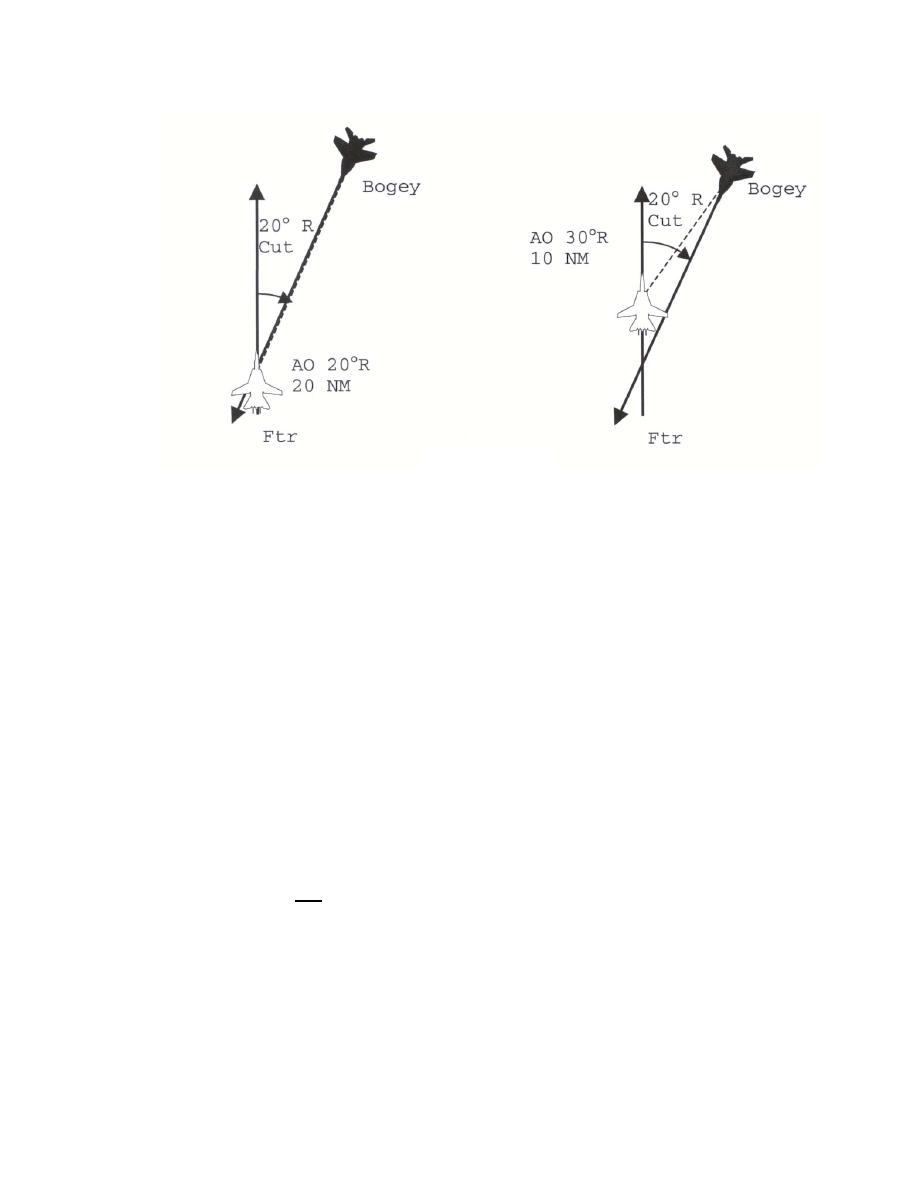 |
|||
|
|
|||
|
|
|||
| ||||||||||
|
|  INTERCEPT PROCEDURES TEXTBOOK
Figure 5
Changing Target Aspect
We have established that if the bogey is not on collision bearing, or angle off does not equal
collision bearing (or CATA), then drift will occur. For every degree the bogey drifts in angle
off, there will be an equal amount of change in target aspect.
For example, in Figure 5 note the change in TA in a 160 DTG, R-L situation where the
collision bearing is 10R (20R cut) with the bogey at 20R AO and the TA 0. The bogey is
10 right of collision bearing and will, therefore, drift to the right. After 10 of drift the bogey
will be 30R and, since the set-up is the same, the TA will have changed by an amount equal to
the amount of drift. Consequently, the TA would be 10R. Ten degrees of drift changed the TA
by 10.
Proof with a 180 DTG Set-up
The previous rule can be proven most easily in the special case of a set-up with 180 DTG, as
in Figure 6 and 7. Assume 180 DTG with 10R AO at 20 miles. (Note: with 180 DTG,
AO = TA in both amount and direction). The lateral displacement is 20,000 feet, and will remain
constant since the FFP (fighter flight path) is parallel to the BFP (bogey flight path).
37
|
|
Privacy Statement - Press Release - Copyright Information. - Contact Us |